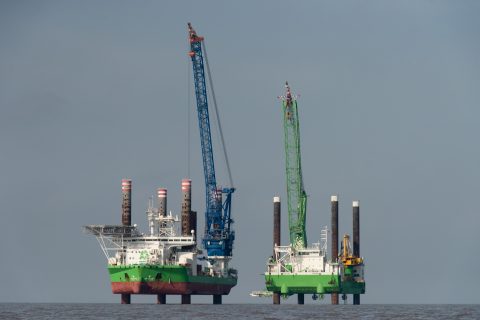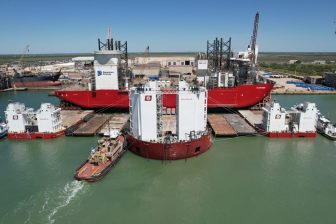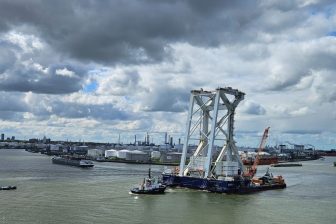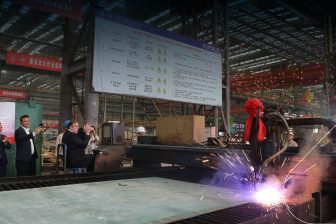
Hinkley Point C offshore work enters final stage
The EDF-led Hinkley Point C project in Somerset is moving ahead with the offshore works heading into its final stages with the arrival of two jack-up vessels to the site. DEME’s Neptune and Sea Challenger, will be used to install vital components for the power station’s cooling water system.
Six vertical shafts will be installed at a depth of more than 20-metres, marking the next stage in connecting the six miles of tunnels with the seabed.
Once installed, miners will dig a horizontal connection between the bottom of the shaft and the tunnel. This is the first part of linking the intake and outfall heads with the tunnels. These 5,000-tonne structures were lowered onto the seabed last summer and will circulate water to the two nuclear reactors.
Longer than a football pitch
Often used to build offshore wind farms, the platforms’ cranes have a combined lifting capacity of 1,500 tonnes. At 132 metres, the Sea Challenger is longer than a football pitch, and Neptune is 60 metres long.
Each vessel uses its four legs to elevate itself above sea level – so it can operate safely without being impacted by waves and currents.
Jonathan Smith, area delivery director, said, “This is one of the final stages of our offshore operations, which will see teams from EDF, Balfour Beatty and New Wave Solutions working together to deliver yet another incredible feat of engineering. The cooling water system is critical to the power station – which will help Britain fight climate change and achieve stronger energy security.”
Work to install the shafts will continue into the Autumn.
You just read one of our premium articles free of charge
Register now to keep reading premium articles.




